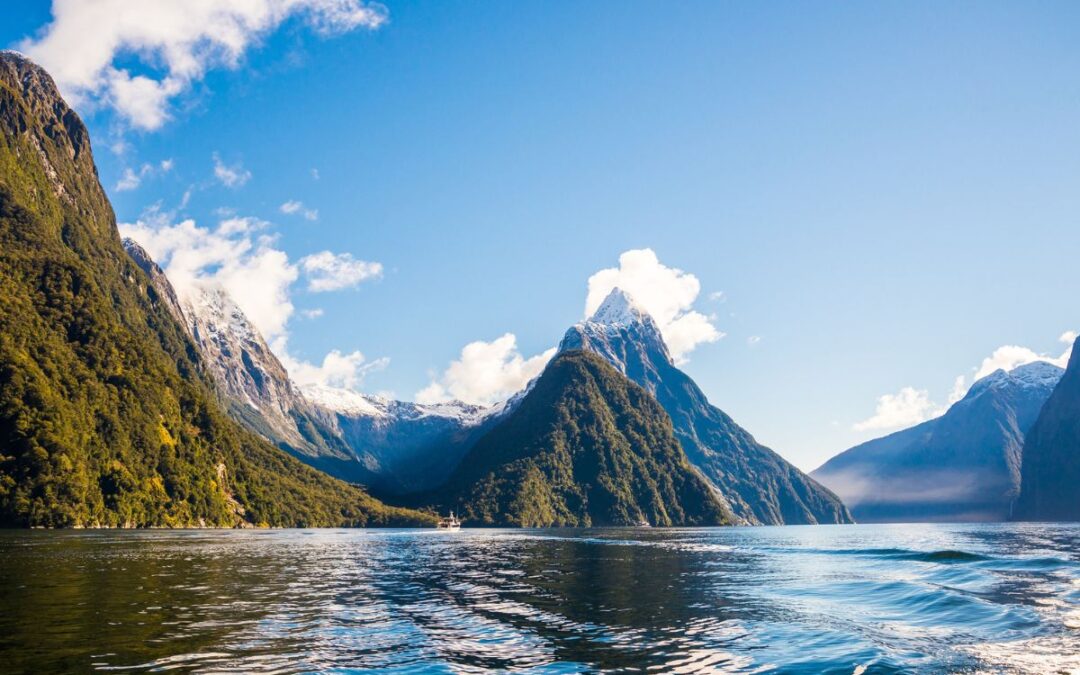The Government has today announced a $15.2 million investment to upgrade infrastructure and enhance conservation at Milford Sound Piopiotahi, ensuring one of New Zealand’s most treasured natural destinations is protected while enabling sustainable tourism growth.
The funding marks the first tranche of decisions from the long-running Milford Opportunities Project (MOP) — an initiative launched in 2017 to respond to increasing visitor demand and environmental pressures on the Milford corridor. The investment will go toward improving visitor amenities, restoring natural areas, and maintaining vital access routes.
In a major move welcomed by industry, the Government has confirmed that both cruise ships and aircraft will continue to access the fjord, bringing long-awaited certainty to tourism operators and regional planners. This decision reverses a previous proposal to prohibit cruise vessels from entering Milford’s inner harbour — one of the most contentious recommendations from the MOP’s 2021 masterplan.
UNESCO World Heritage Site
“This iconic UNESCO World Heritage site attracts more than a million visitors a year and injects around $200 million into the regional economy,” said Conservation Minister Tama Potaka. “This investment will protect the jewel in our conservation crown while supporting jobs, infrastructure and sustainable tourism.”
Visitors accessing the fjord via Milford Road can expect improved experiences, including a new alpine nature walk at Gertrude Valley, enhanced short-stop facilities, the clean-up of Little Tahiti landfill, and flood protection upgrades at the Cleddau River. At Deepwater Basin, the recreational boat ramp will be replaced with new and much-needed facilities.
Funding will come from the International Visitor Levy ($8.2 million) and the Department of Conservation’s capital works programme ($7 million).
New Zealand Cruise Association
Tourism and Hospitality Minister Louise Upston emphasised the significance of today’s announcement for tourism recovery post-Covid. “Milford Sound Piopiotahi plays a vital role in New Zealand’s visitor economy. We’re backing operators and communities by ensuring continued access and investing in the amenities that make this destination world-class.”
The New Zealand Cruise Association (NZCA) also welcomed the decision, saying it brings stability after four years of uncertainty. “Milford is a cornerstone of both New Zealand and South Island cruise itineraries,” said a spokesperson. “This announcement supports long-term regional planning and will help retain New Zealand’s appeal on the global cruise map.”
Cruise operations in Fiordland are already governed by strict environmental oversight through the Deed of Agreement with Environment Southland, which sets clear obligations for cruise operators to manage environmental risks. Cruise fees also support local biosecurity, navigation safety, and water quality monitoring — reducing financial pressure on local ratepayers.
Protecting Piopiotahi
For Ngāi Tahu, the announcement affirms the cultural and environmental significance of Piopiotahi, known as the final masterpiece of atua and land-shaper Tū Te Rakiwhānoa. Minister Potaka confirmed that further engagement with Ngāi Tahu, local government, and tourism stakeholders will shape the next phase of development, including a multi-year investment plan and exploration of a Special Amenities Area within Fiordland National Park.
“This is about protecting what makes Piopiotahi extraordinary,” said Potaka, “while ensuring it continues to welcome the world in a way that honours the environment, community, and economy.”

